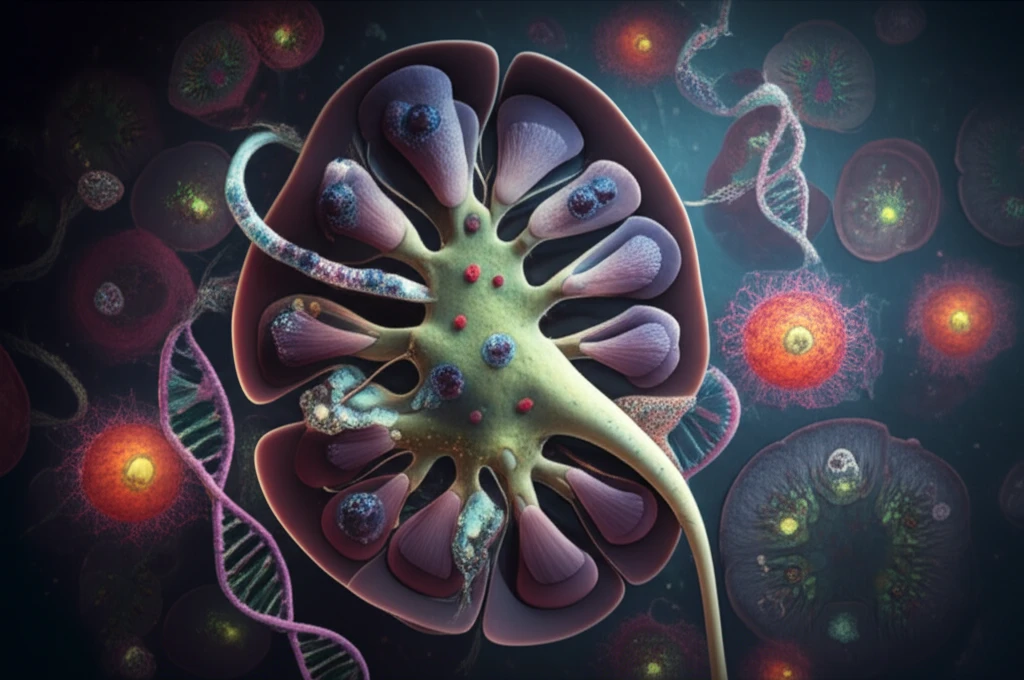
Unlocking Kidney Health: Understanding Interstitial Inflammation in ANCA-Associated Vasculitis
"A deep dive into how T-cells and B-cells in kidney biopsies impact treatment and long-term outcomes for vasculitis patients."
Antineutrophil cytoplasmic antibody (ANCA)-associated vasculitis (AAV) represents a group of autoimmune conditions characterized by inflammation and damage to small blood vessels. These conditions, including granulomatosis with polyangiitis (GPA) and microscopic polyangiitis (MPA), often lead to severe kidney involvement, known as rapidly progressive glomerulonephritis (GN). This form of GN can quickly lead to end-stage renal disease, underscoring the urgent need for effective diagnostic and therapeutic strategies.
Kidney biopsies play a crucial role in evaluating the extent and nature of kidney damage in AAV. These biopsies help doctors understand the types of immune cells present in the kidney tissue, particularly T cells and B cells. T cells are a major component of the inflammatory infiltrate in the kidneys of AAV patients, and their role in disease progression has been a topic of extensive research. While treatments targeting B cells have shown success in managing AAV, the specific impact of T cells and B cells within the kidney remains an area of active investigation.
A pivotal study, the Rituximab in ANCA-Associated Vasculitis (RAVE) trial, compared the effectiveness of rituximab (RTX), a B-cell depleting agent, to cyclophosphamide (CYC), a broader immunosuppressant, in treating AAV. Analyzing kidney biopsies from RAVE trial participants offers valuable insights into how different treatment approaches affect the immune cell composition within the kidney and, consequently, long-term kidney outcomes. This article delves into a detailed analysis of these biopsies, examining the presence and impact of T cells and B cells on renal health in AAV patients.
T Cells vs. B Cells: What Kidney Biopsies Reveal About Vasculitis Treatment?

The study meticulously analyzed renal biopsies from 33 patients who participated in the RAVE trial. These patients were treated with either cyclophosphamide (CYC) or rituximab (RTX). The researchers classified the biopsies using the ANCA GN classification, which categorizes kidney damage into focal, mixed, sclerotic, and crescentic types. Immunohistochemical staining was then used to identify and quantify T cells (CD3-positive) and B cells (CD20-positive) in the interstitial spaces of the kidney tissue.
- Focal: 46%
- Mixed: 33%
- Sclerotic: 12%
- Crescentic: 9%
What Does This Mean for Vasculitis Patients?
This study provides valuable insights into the complex interplay between immune cells and kidney function in ANCA-associated vasculitis. While T cells dominate the inflammatory landscape within the kidney, their presence at the time of biopsy does not definitively predict long-term outcomes. The initial kidney function remains the strongest predictor of future renal health. Although treatment-specific effects were noted, particularly with rituximab, the overall findings suggest that the intensity of immunosuppression should be guided by factors beyond just the T-cell and B-cell composition in the kidney biopsy. Further research, including repeat biopsies, is needed to fully elucidate the dynamic changes in the kidney microenvironment and optimize treatment strategies for AAV patients.
